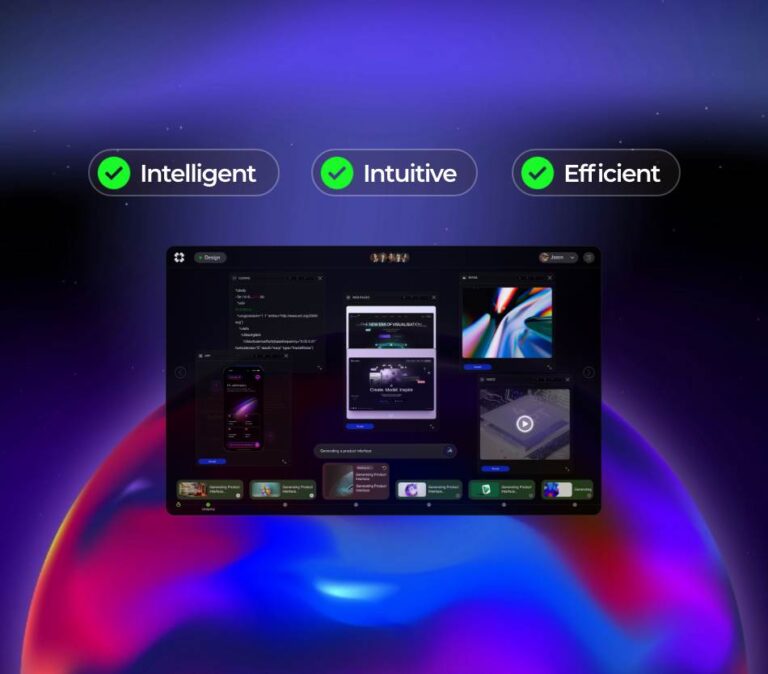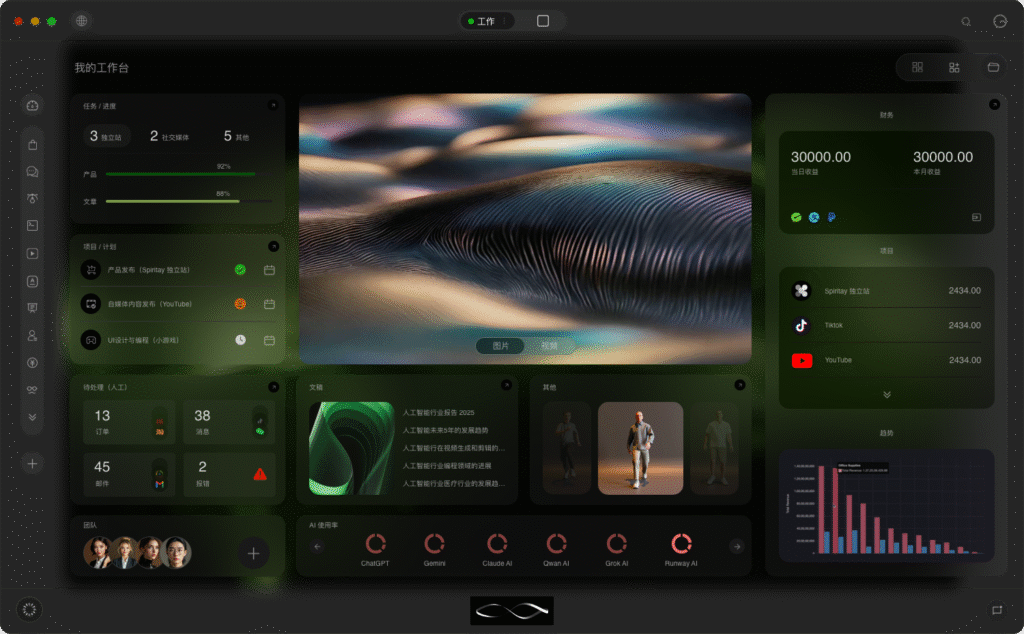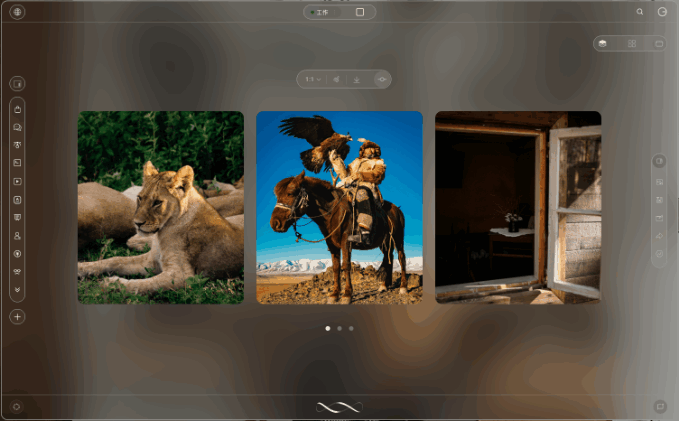Organizations are moving from pilot projects to production deployments of AI in heavy industry. This guide walks through practical systems and platforms that enable AI-powered industrial AI automation — explaining concepts for newcomers, giving engineers architectural patterns and trade-offs, and advising product teams on ROI, vendor choices, and operational risks.
Why AI-powered industrial AI automation matters
Imagine a manufacturing line that not only routes parts but also adapts in real time when a machine starts producing a subtle defect. Or a utilities operator that senses a pattern in sensor streams and schedules preventive maintenance automatically. That’s the essence of AI-powered industrial AI automation: combining intelligent models, orchestration, and operational tooling to turn data into automated action at scale.
Everyday scenario
Consider a steel plant using camera feeds and vibration sensors. An unsupervised model clusters behavior across machines to detect anomalous states. When a cluster shows drift, a workflow triggers a high-priority inspection, notifies technicians via their mobile app, pauses production in a controlled way, and stores video snippets for review. This mix of perception, decisioning, and task orchestration is a common real-world pattern.
Core components of a practical system
- Ingest: edge collectors, MQTT/Kafka streams, and secure file transfer for batch uploads.
- Feature & data pipelines: ETL/streaming frameworks that normalize telemetry and video-derived features.
- Model layer: training, versioning, and model-serving infrastructure for both batch and low-latency inference.
- Orchestration & automation: workflow engines that connect events, decision logic, human approvals, and downstream systems (ERP, MES).
- Agents & policy engines: modular agents that perform actions (tickets, actuator commands) under governance rules.
- Observability & governance: logging, tracing, metrics, explainability, drift detection, and access controls.
Architectural patterns and trade-offs
Choose a pattern based on latency needs, reliability, and team capabilities. Below are common choices and when to use them.
Synchronous model serving vs event-driven inference
Synchronous low-latency serving is necessary when a control loop depends on instant decisions (e.g., automated safety interlocks). This usually requires GPU-backed inference serving (Triton, Ray Serve, Seldon) and careful tail-latency engineering: p95 and p99 latency targets, warm-up policies, and autoscaling with predictive rules.
Event-driven inference works for analytics and non-critical tasks: analyses run on batches or micro-batches via Kafka/Streams and Airflow/Argo/Prefect. It’s cheaper and easier to scale but unsuitable for hard real-time control.
Monolithic agents vs modular pipelines
Monolithic agents bundle sensing, reasoning, and action in one service — simpler to start but harder to evolve or secure. Modular pipelines split responsibilities: an inference service exposes an API, orchestration triggers workflows, and an agent executes tasks. Modular design improves observability and governance but needs stable APIs and versioning discipline.
Managed vs self-hosted platforms
Managed platforms (cloud vendor MLOps, managed Kubernetes + Operator stacks) reduce ops overhead and speed time-to-market. Self-hosted stacks (Kubeflow, Flyte, Airflow, Argo, Dagster) give you control over data residency and customization. The trade-off is operational staffing — choose managed if you lack SRE resources, self-hosted if regulatory constraints or cost models require it.
Tools and integration patterns
Typical production stacks combine specialized tools. Below are realistic pairings and why teams pick them.
- Data ingest and streaming: Apache Kafka, MQTT brokers, AWS Kinesis for high-throughput telemetry.
- Workflow orchestration: Argo Workflows or Prefect for event-driven, Apache Airflow or Dagster for scheduled pipelines.
- Model training and MLOps: Kubeflow, MLflow, or SageMaker for lifecycle management; use BentoML, Seldon Core, or Triton for model serving.
- Agents and decision layer: LangChain-like frameworks or bespoke rule engines; integrate RPA tools (UiPath, Automation Anywhere) where humans interact with legacy UIs.
- Edge and inference: NVIDIA Jetson, AWS IoT Greengrass, or on-prem GPU clusters for low-latency inference and video preprocessing.
Case examples: clustering and video
Two concrete use cases illustrate how systems fit together:
Anomaly detection with AI unsupervised clustering models
In a packaging plant, teams use AI unsupervised clustering models on sensor vectors to find new fault modes. The pipeline streams sensor data, computes rolling features, and runs clustering models (e.g., density-based or contrastive embedding followed by clustering). When a cluster that historically correlated with failures reappears, the automation layer creates a maintenance job and escalates to shift leads.
Operational notes: track cluster purity, silhouette or stability metrics, and drift signals. Retrain schedules should be tied to data-volume thresholds and human-in-the-loop validation to avoid false positives from seasonal shifts.
AI-driven video editing for inspections
Field teams often rely on video to verify faults. AI-driven video editing pipelines extract relevant clips, annotate timestamps, and compress footage for fast review. A model identifies frames of interest, the orchestration service assembles a short summary, and a human approves before archival. This reduces review time and stores actionable evidence alongside maintenance records.
Operational notes: manage video storage costs with tiering, ensure GDPR or local privacy rules are respected, and maintain chain-of-custody metadata for audits.
Deployment and scaling considerations
Productionizing automation is more about systems engineering than model accuracy. Key dimensions to design for:
- Throughput vs latency: set SLOs and design for the critical percentile (p95/p99). Use batching for cost-effective high throughput, single-request GPU inference for low latency.
- Autoscaling: combine metrics (request rate, GPU utilization, queue length) to avoid cold-start penalties and overscaling.
- Data locality: put compute near data sources for video-heavy workloads to reduce egress costs and latency.
- Blue/green and canary rollouts: deploy model and orchestration changes incrementally to limit blast radius.
Observability, failure modes and mitigations
Monitor three planes: infrastructure, pipeline, and model behavior. Useful signals include:
- Infrastructure: CPU/GPU utilization, container restarts, FSR (file system) errors.
- Pipeline: event lag, backlog size, failed task rates, retry loops.
- Model: input distribution statistics, prediction confidence, anomaly counts, drift metrics, and explainability traces for critical decisions.
Common failure modes are cascading retries that amplify load, silent model regressions due to data drift, and permission or networking changes that break integrations. Mitigations include circuit breakers, synthetic tests that run end-to-end, and guardrails that default to human-in-loop when confidence is low.
Security, compliance, and governance
Industrial automation systems tie into physical processes; security is paramount. Best practices:
- Least privilege access, strong identity, and certificate-based device authentication for edge devices.
- Secrets management and encrypted transport for telemetry and model artifacts.
- Model governance: versioning, audit trails for model decisions, and rollback capability.
- Explainability and record-keeping to meet regulatory requirements (e.g., EU AI Act considerations and NIST AI RMF alignment).
- Data residency and privacy — design for on-prem operations or hybrid architectures if jurisdiction demands it.
Vendor landscape and trade-offs
Vendor choice often depends on constraints: regulatory, team skills, and cost. A comparative view:
- Enterprise RPA vendors (UiPath, Automation Anywhere): strong at UI automation and human workflows; pair these with ML services for perception tasks but expect integration work for bespoke models.
- Cloud MLOps (AWS SageMaker, GCP Vertex AI, Azure ML): quick to adopt managed model lifecycle but watch for egress costs and vendor lock-in.
- Open-source stacks (Kubeflow, Flyte, Airflow, Argo): best for custom needs and data residency, but require committed engineering resources.
- Inference-focused platforms (Triton, Seldon, BentoML): optimize model serving. Choose based on supported runtimes and ease of integration with your orchestration layer.
Implementation playbook (step-by-step in prose)
Below is a practical path teams can follow to move from prototype to production.

- Define the automation boundary: map inputs, outputs, error modes, and human approvals. Set p95/p99 latency targets and false-positive tolerances.
- Start with a minimal viable pipeline: reliable ingest, feature extraction, and a deployable model endpoint. Use synthetic traffic to validate SLOs.
- Introduce orchestration: wire detection events to actions with manual approval gates. Prefer modular connectors for replaceability.
- Harden observability: add synthetic probes, drift detectors for models, and runbooks for common alerts.
- Scale iteratively: move non-critical workloads to batch or event-driven pipelines to reduce costs, and reserve low-latency resources for critical loops.
- Operationalize governance: model registries, access controls, and a change approval board for production model updates.
Business impact and ROI
Measuring ROI requires linking automation to business KPIs: reduced downtime, headcount redeployment, faster cycle times, or decreased scrap rates. A common approach is to run a 90-day pilot with A/B comparisons, instrumenting both operational KPIs and system metrics to calculate cost per incident avoided, mean time to repair (MTTR) improvement, and total cost of ownership (TCO) for the platform.
Trends and policy signals
Recent attention on standards like the NIST AI Risk Management Framework and regional AI regulation means teams should prioritize explainability and auditability. Open-source projects such as LangChain, Ray, and Seldon have accelerated agent and inference patterns — but emerging standards will influence vendor capabilities around transparency and data governance.
Key Takeaways
AI-powered industrial AI automation delivers significant operational value when built with clear SLOs, modular architectures, and disciplined governance. For beginners, start with a clear automation boundary and a minimal pipeline. Engineers must focus on latency, scaling, and observability; product teams should measure ROI and select vendors aligned with regulatory needs. Practical adoption combines robust data pipelines, reliable model serving, and orchestration that respects safety and human oversight.
Practical systems win: automation that is observable, governable, and incrementally deployable will outcompete flashy but unmaintainable prototypes.










